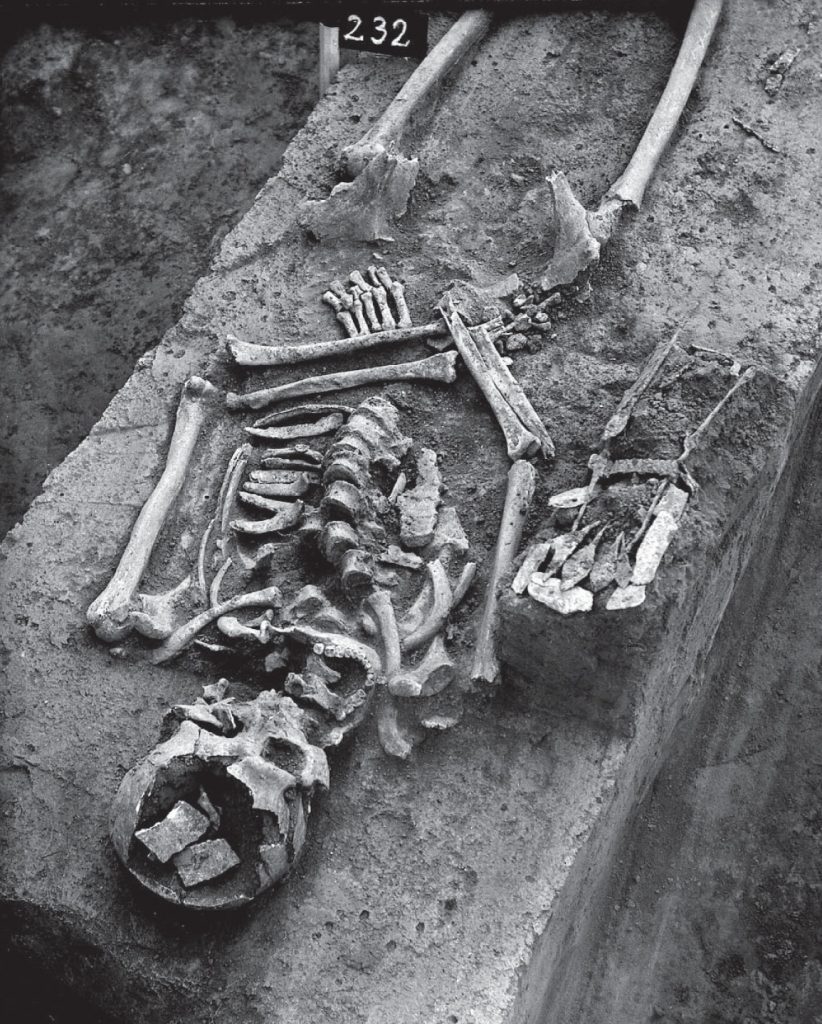THE SCYTHIANS
IN ONE OF THE HIGH RELIEFS FOUND IN AN ASSYRIAN ROYAL PALACE, WE CAN SEE HORSEMEN CHASING THREE RIDERS DRESSED IN OUTLANDISH GARMENTS. THE SPECIALIST ARCHAEOLOGICAL LITERATURE IDENTIFIES TECHNICAL DETAILS THAT TELL US THAT THESE RIDERS ARE SCYTHIAN WARRIORS. THEIR WEAPONRY CONSISTS OF A SHORT SPEAR, AND A DAGGER-LIKE CUT AND THRUST SWORD (AKHINAKES), TOGETHER WITH THE EXPECTED BOW AND ARROW. THE BOWS ARE FAIRLY SMALL AND SHORT, THEIR SHAPE IS TRIANGULAR, AND ON EITHER SIDE OF THE GRIP THERE IS NO SIGN OF THE TYPICAL CURVE, WHICH IS HIGHLY CHARACTERISTIC OF LATER SCYTHIAN RECURVE BOWS.
The next representation alluding to the equestrian people of the steppes is to be found in the high-relief of a Klazomenian sarcophagus dating from 6th Century BCE Asia Minor.
This is an illustration of Cimmerian people armed with bows with a curving tip, and with a typically Scythian delineation. The Scythian archer, with or without a horse, became a popular theme for various fine art pieces throughout the following centuries. Our only evidence for the nature of Scythian bows, however, ends with the study of these often intricate pieces, as bows or remains of bows have not yet turned up from excavations of Scythian sites.
On the two sides of the grip, the strong, double-curvature of Scythian bows is always perceptible in the images: their limbs curve back and they end in a typical, readily identified draw shape.

Representations of the strongly curved delineation of the Scythian bow became so wide-spread in fine arts during antiquity and the Renaissance, especially in images of Cupid that probably many people can easily visualize it.
In certain representations from the 5th-6th Century BCE, examples with a lighter curvature are perceptible as well— these are similar to later recurve bows, those of the Assyrian or the Persian periods.
Concerning the representations of the Scythian bows, many have noted the extraordinary significance of asymmetric bows. These are bows whose limbs and curves are dissimilar on the left and right side of the grip. When held vertically, usually the upper side of the bow is shorter and more steeply bent. Even the shape of the groove in which the string sits is distinctly different at the two tips. The asymmetric bows of the Scythians were not only immortalized in ancient Greek fine art works: similar images emerged in Kurdistan (from the borderline of Turkey, Iraq and Iran), and from China as well. The extent of this phenomenon leads us to the conclusion that due to some uncertain reasons – maybe in order to make aiming easier from the saddle – an asymmetric form of the Scythian bow developed as well, despite the fact that the bows of the Scythian, with their length of 80-100 cm, were not especially long at the start of their use.


Although Scythian bows have not yet turned up in excavations, we can deduce from images that they were multi-layer composite recurve bows whose length reached up to 80 or 100 centimetres. We assume therefore that their core design was formed of curved wood, to which animal sinews were fixed on the outside, while on the inside it was strengthened by bone- or horn-plates. The sinew overlay was longer than the wooden core and stretching along the arc of the bow, it ended in a type of groove, or nock, at the two tips of the bow. The grip was strengthened from the inside by wooden or bone-plate layers. The bow in the drawn state took on a concave shape, curving away significantly from the grip.




